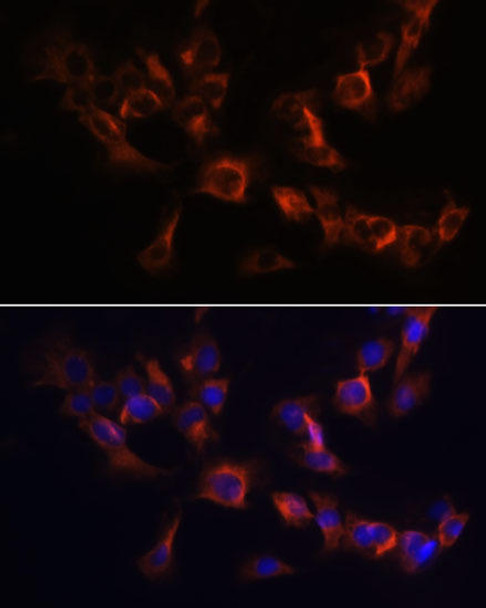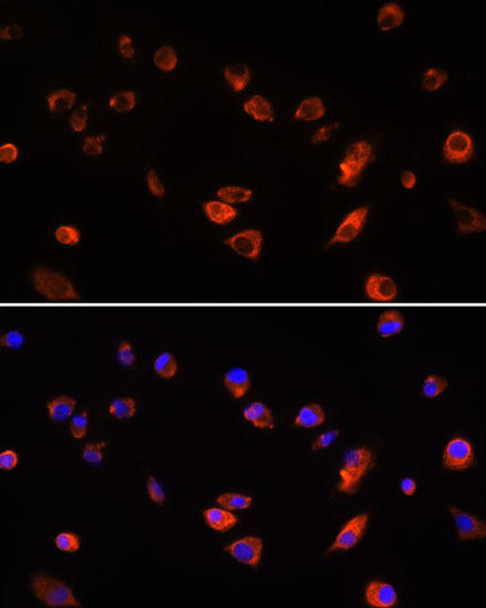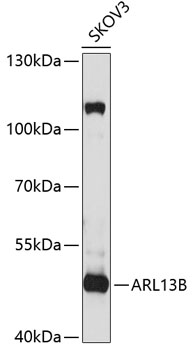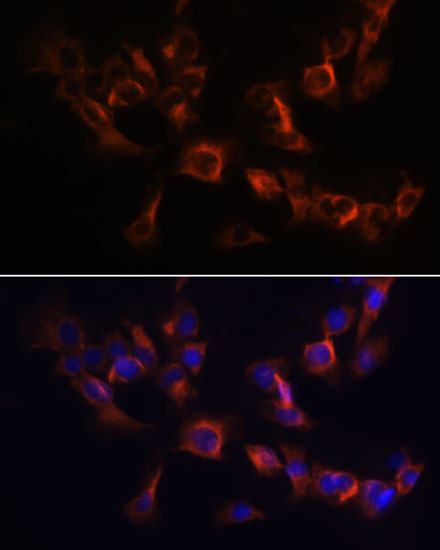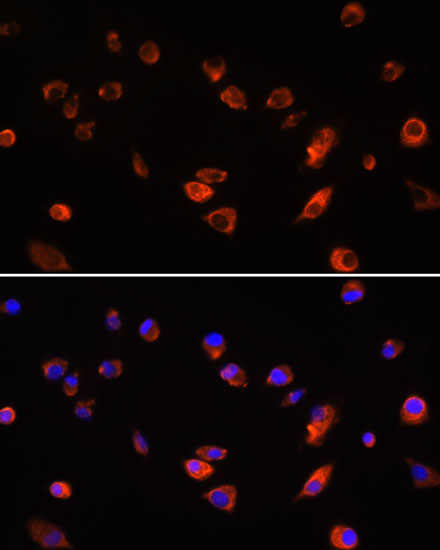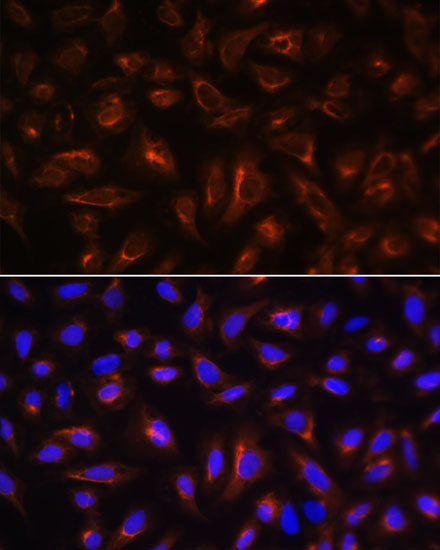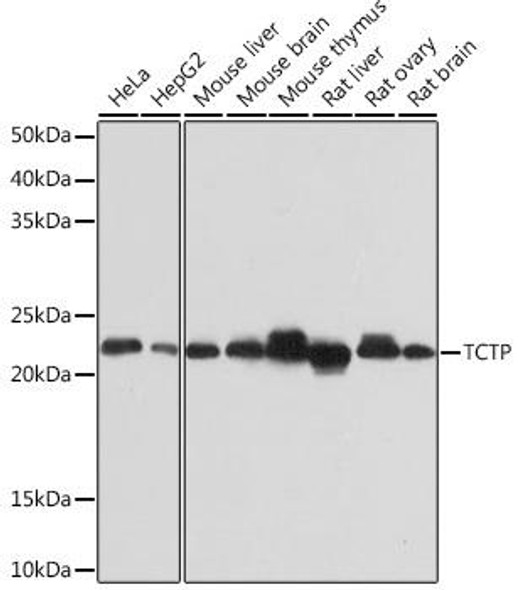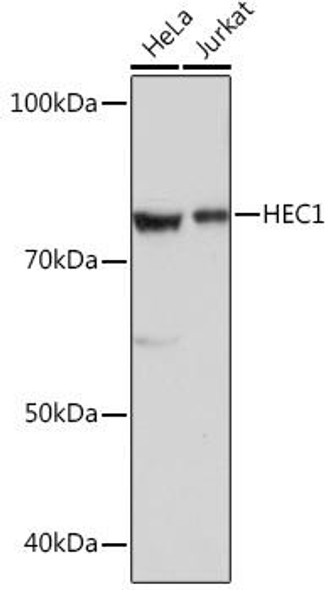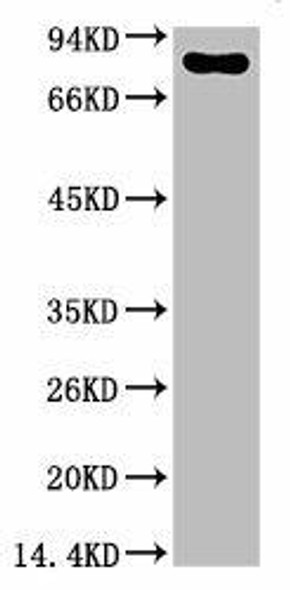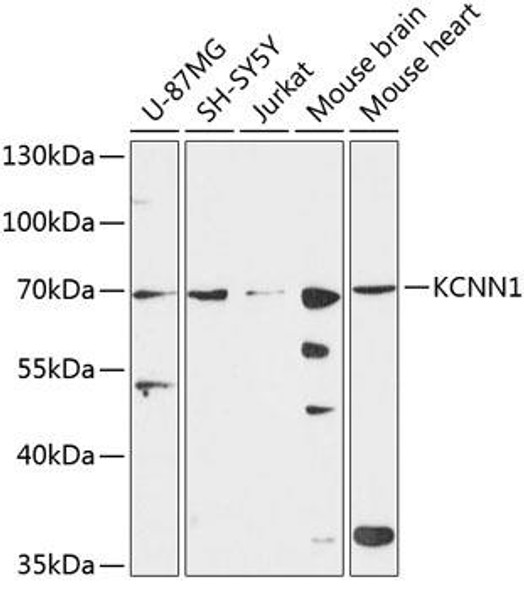Description
Anti-ARL13B Antibody (CAB5200)
The ARL13B Polyclonal Antibody (CAB5200) is a valuable tool for researchers studying the ARL13B protein, which is involved in primary cilia formation and function. This antibody is raised in rabbits and has been validated for use in various applications, including Western blotting. Its high reactivity with human samples makes it an ideal choice for studies focused on the role of ARL13B in cellular processes.ARL13B is a small GTPase that localizes to the ciliary membrane and plays a critical role in ciliary structure and function. Mutations in the ARL13B gene have been linked to ciliopathies, a group of genetic disorders characterized by abnormalities in cilia structure and function.
By using the ARL13B Polyclonal Antibody, researchers can gain valuable insights into the mechanisms underlying ciliary dysfunction and its implications in diseases such as Bardet-Biedl syndrome and Joubert syndrome.Overall, the ARL13B Polyclonal Antibody is a valuable tool for researchers interested in delving deeper into the role of ARL13B in ciliary biology and its implications in human health and disease. Its high specificity and sensitivity make it a reliable choice for studies investigating the function of ARL13B in various cellular contexts.
| Antibody Name: | Anti-ARL13B Antibody |
| Antibody SKU: | CAB5200 |
| Antibody Size: | 20uL, 50uL, 100uL |
| Application: | WB IF |
| Reactivity: | Human, Mouse, Rat |
| Host Species: | Rabbit |
| Immunogen: | Recombinant fusion protein containing a sequence corresponding to amino acids 1-240 of human ARL13B (NP_878899.1). |
| Application: | WB IF |
| Recommended Dilution: | WB 1:500 - 1:2000 IF 1:50 - 1:200 |
| Reactivity: | Human, Mouse, Rat |
| Positive Samples: | SKOV3 |
| Immunogen: | Recombinant fusion protein containing a sequence corresponding to amino acids 1-240 of human ARL13B (NP_878899.1). |
| Purification Method: | Affinity purification |
| Storage Buffer: | Store at -20'C. Avoid freeze / thaw cycles. Buffer: PBS with 0.02% sodium azide, 50% glycerol, pH7.3. |
| Isotype: | IgG |
| Sequence: | MFSL MASC CGWF KRWR EPVR KVTL LMVG LDNA GKTA TAKG IQGE YPED VAPT VGFS KINL RQGK FEVT IFDL GGGI RIRG IWKN YYAE SYGV IFVV DSSD EERM EETK EAMS EMLR HPRI SGKP ILVL ANKQ DKEG ALGE ADVI ECLS LEKL VNEH KCLC QIEP CSAI SGYG KKID KSIK KGLY WLLH VIAR DFDA LNER IQKE TTEQ RALE EQEK QERA ERVR KLRE ERKQ NEQE QAEL |
| Gene ID: | 200894 |
| Uniprot: | Q3SXY8 |
| Cellular Location: | Cell projection, Lipid-anchor, cilium membrane |
| Calculated MW: | 36kDa/37kDa/48kDa |
| Observed MW: | 49kDa |
| Synonyms: | ARL13B, ARL2L1, JBTS8 |
| Background: | This gene encodes a member of the ADP-ribosylation factor-like family. The encoded protein is a small GTPase that contains both N-terminal and C-terminal guanine nucleotide-binding motifs. This protein is localized in the cilia and plays a role in cilia formation and in maintenance of cilia. Mutations in this gene are the cause of Joubert syndrome 8. Alternate splicing results in multiple transcript variants. |
| UniProt Protein Function: | ARL13B: Defects in ARL13B are the cause of Joubert syndrome type 8 (JBTS8). JBTS is an autosomal recessive disorder presenting with cerebellar ataxia, oculomotor apraxia, hypotonia, neonatal breathing abnormalities and psychomotor delay. Neuroradiologically, it is characterized by cerebellar vermis hypoplasia/aplasia, thickened and reoriented superior cerebellar peduncles, and an abnormally large interpeduncular fossa, giving the appearance of a molar tooth on transaxial slices (molar tooth sign). Additional variable features include retinal dystrophy and renal disease. Belongs to the small GTPase superfamily. Arf family. 2 isoforms of the human protein are produced by alternative splicing. |
| UniProt Protein Details: | Protein type:G protein, monomeric; G protein, monomeric, ARF Chromosomal Location of Human Ortholog: 3q11.1 Cellular Component: intracellular; cilium Molecular Function:protein binding; GTP binding Biological Process: formation of radial glial scaffolds; smoothened signaling pathway; dorsal/ventral pattern formation; interneuron migration from the subpallium to the cortex; sensory cilium biogenesis; organelle organization and biogenesis; small GTPase mediated signal transduction; neural tube patterning; cilium biogenesis; heart looping Disease: Joubert Syndrome 8 |
| NCBI Summary: | This gene encodes a member of the ADP-ribosylation factor-like family. The encoded protein is a small GTPase that contains both N-terminal and C-terminal guanine nucleotide-binding motifs. This protein is localized in the cilia and plays a role in cilia formation and in maintenance of cilia. Mutations in this gene are the cause of Joubert syndrome 8. Alternate splicing results in multiple transcript variants. [provided by RefSeq, Mar 2010] |
| UniProt Code: | Q3SXY8 |
| NCBI GenInfo Identifier: | 115503786 |
| NCBI Gene ID: | 200894 |
| NCBI Accession: | Q3SXY8.1 |
| UniProt Secondary Accession: | Q3SXY8,Q504W8, Q8TCL5, D3DN29, G3V1S8, |
| UniProt Related Accession: | Q3SXY8 |
| Molecular Weight: | Observed: 49kDaCalculated: 36kDa/37kDa/48kDa |
| NCBI Full Name: | ADP-ribosylation factor-like protein 13B |
| NCBI Synonym Full Names: | ADP-ribosylation factor-like 13B |
| NCBI Official Symbol: | ARL13B |
| NCBI Official Synonym Symbols: | JBTS8; ARL2L1 |
| NCBI Protein Information: | ADP-ribosylation factor-like protein 13B; ARL2-like protein 1; ADP-ribosylation factor-like 2-like 1 |
| UniProt Protein Name: | ADP-ribosylation factor-like protein 13B |
| UniProt Synonym Protein Names: | ADP-ribosylation factor-like protein 2-like 1; ARL2-like protein 1 |
| UniProt Gene Name: | ARL13B |
| UniProt Entry Name: | AR13B_HUMAN |


